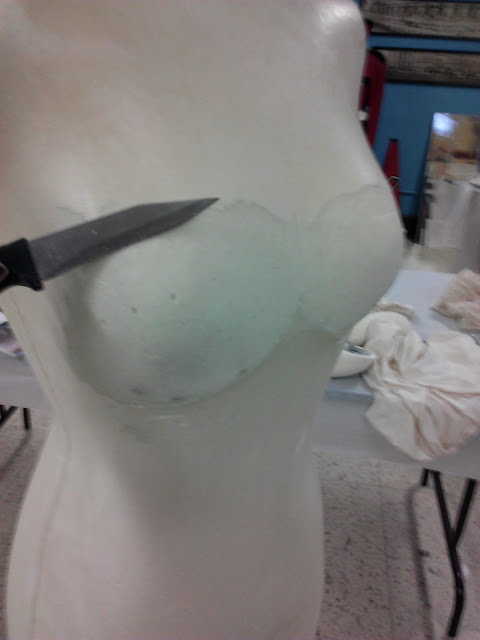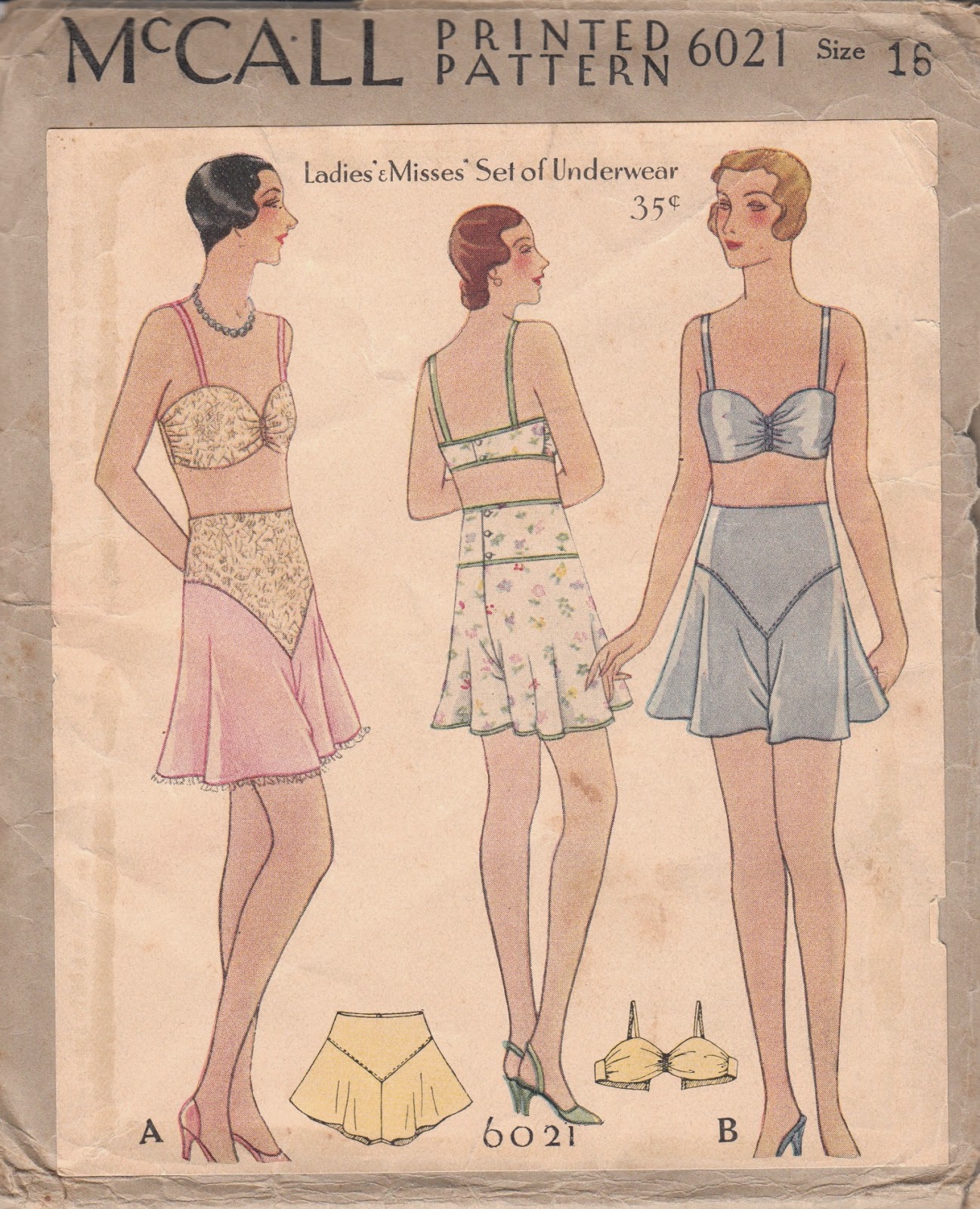Manipulating Dress Forms and Mannequins to Display Antique Clothing
Some dresses, especially antique ones, require custom mounts to accommodate the measurements, proportions, and shapes achieved by the corsets in fashion.
When placed on modern mannequins, historical garments not only have a very slight chance of fitting well, they also "just look wrong;" this is because our 21st century shape is vastly different from the shape achieved by wearing structural undergarments such as corsets, petticoats, and panniers.
To remedy this issue, either in the museum or archival setting or for the home display, is not a task of Herculean proportions.
Try to find dress forms that are made of foam: this will make them easy to carve and manipulate. Before I get to carving my dress forms, I remove the arms and the arm brackets. I remove the stitches from the crotch seam so that I can pull up the jersey cover, and to keep the cover out of the way, I usually knot it a few times so that it is compact and the outside of the cover won't come into contact with the stryofoam dust.
I carve with the small fruit knife pictured (for fine carving) and a large bread knife (for quickly hacking off large chunks). To smooth down the cuts, I sand with a dry pot scrubber or a piece of sandpaper.
Sometimes, padding up is also necessary. I do this after I have carved down my dress form, as the unbleached natural cotton batting I use will be secured to the jersey cover. I try to cut oval-shaped pieces to layer up to achieve the desired "fluffy" affect. I sew the layers of the cotton batting using a long embroidery needle and thread, and I whipstitch around the edges.
With that said, mannequins aren't totally useless. They can't be made smaller, but can be made larger with padding. However, the batting needs something to anchor itself to. In this case, remove all the limbs from your mannequin, clean it up, and use some old or cheap pantyhose! Cut off each pantyhose leg at the crotch and toe, and then cut a slit lengthwise down the pantyhose. Sew both legs together for a tube that is double the width of a single pantyhose leg. Roll this over your mannequin, and you can start sewing on batting!
NEVER change the garments to accomodate the mount. There were a pair of beaded cotton gloves in the Kearny History Museum that had slits up to the palms so that the gloves could fit on the mannequin's hand. Remember that that is PERMANTENTLY DEFACING antique and often RARE garments and should not be done! When in doubt, talk to a museum or textile specialist for ideas, or leave the item in safe storage. Not everything is meant to be nor is appropriate for display.
When placed on modern mannequins, historical garments not only have a very slight chance of fitting well, they also "just look wrong;" this is because our 21st century shape is vastly different from the shape achieved by wearing structural undergarments such as corsets, petticoats, and panniers.
To remedy this issue, either in the museum or archival setting or for the home display, is not a task of Herculean proportions.
Try to find dress forms that are made of foam: this will make them easy to carve and manipulate. Before I get to carving my dress forms, I remove the arms and the arm brackets. I remove the stitches from the crotch seam so that I can pull up the jersey cover, and to keep the cover out of the way, I usually knot it a few times so that it is compact and the outside of the cover won't come into contact with the stryofoam dust.
I carve with the small fruit knife pictured (for fine carving) and a large bread knife (for quickly hacking off large chunks). To smooth down the cuts, I sand with a dry pot scrubber or a piece of sandpaper.
Sometimes, padding up is also necessary. I do this after I have carved down my dress form, as the unbleached natural cotton batting I use will be secured to the jersey cover. I try to cut oval-shaped pieces to layer up to achieve the desired "fluffy" affect. I sew the layers of the cotton batting using a long embroidery needle and thread, and I whipstitch around the edges.
 |
| Just as with the carving, you have to be patient with this process. It's a lot of trial and error; there's no cheating here. |
 | |
|
 |
| A sloppy but sturdy hand-sewn seam. |
NEVER change the garments to accomodate the mount. There were a pair of beaded cotton gloves in the Kearny History Museum that had slits up to the palms so that the gloves could fit on the mannequin's hand. Remember that that is PERMANTENTLY DEFACING antique and often RARE garments and should not be done! When in doubt, talk to a museum or textile specialist for ideas, or leave the item in safe storage. Not everything is meant to be nor is appropriate for display.






